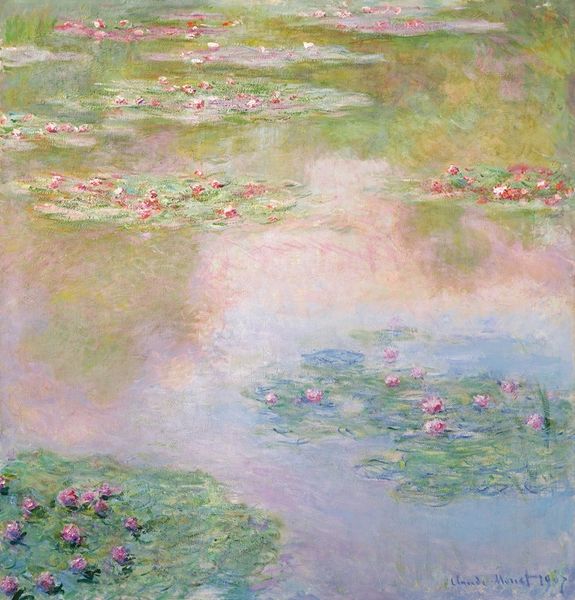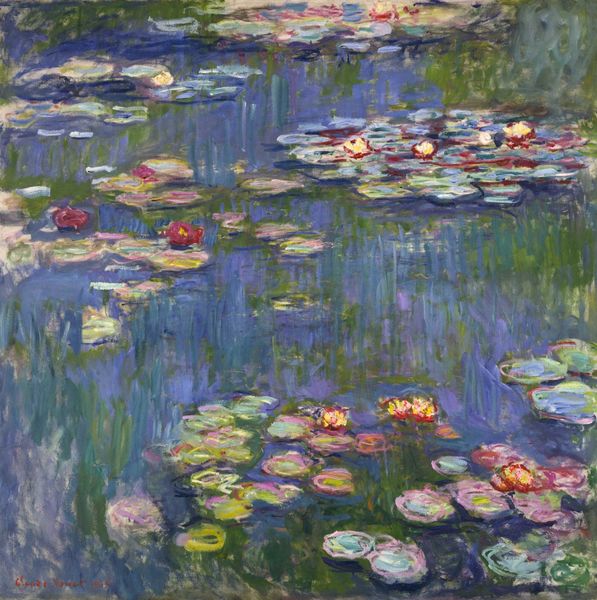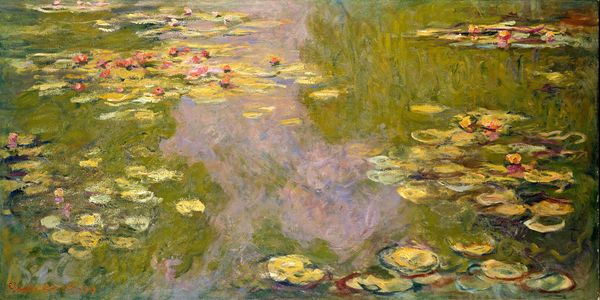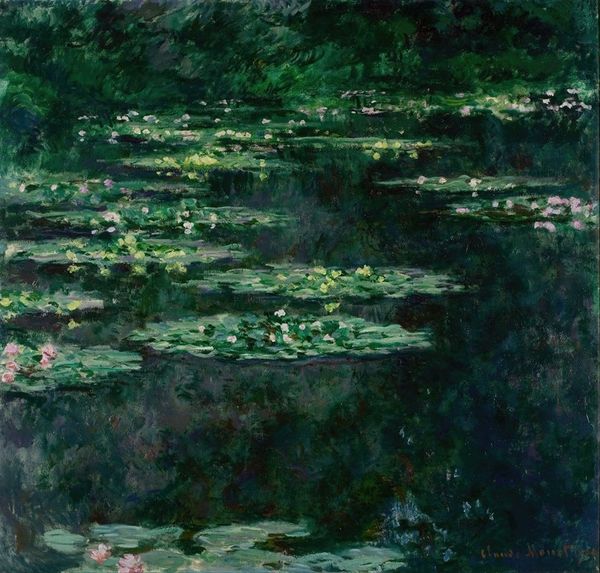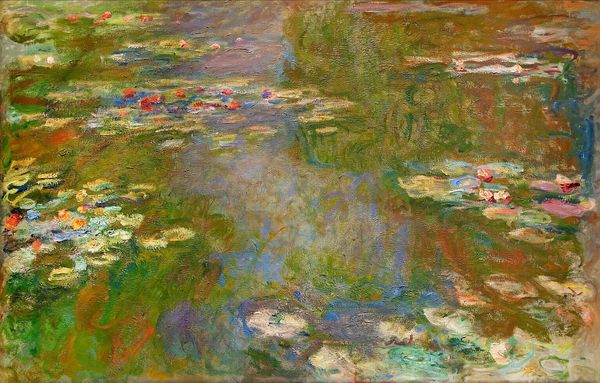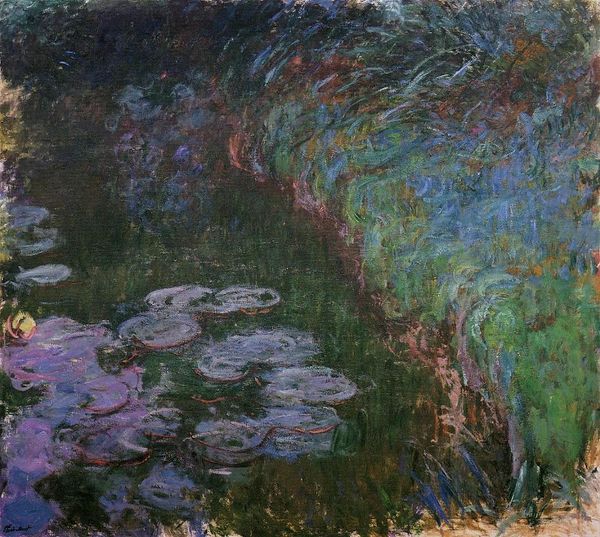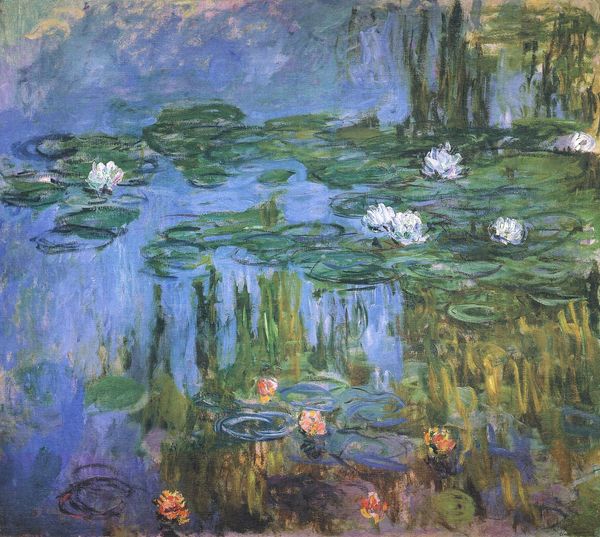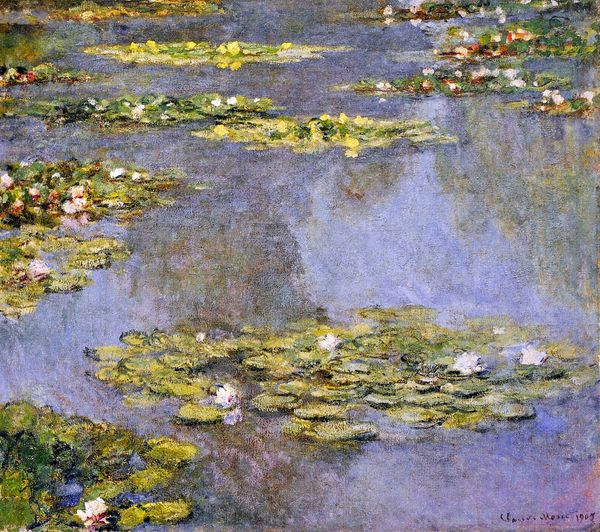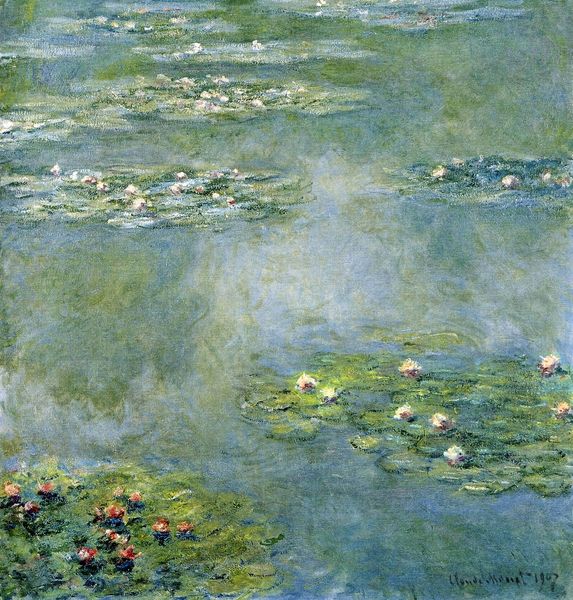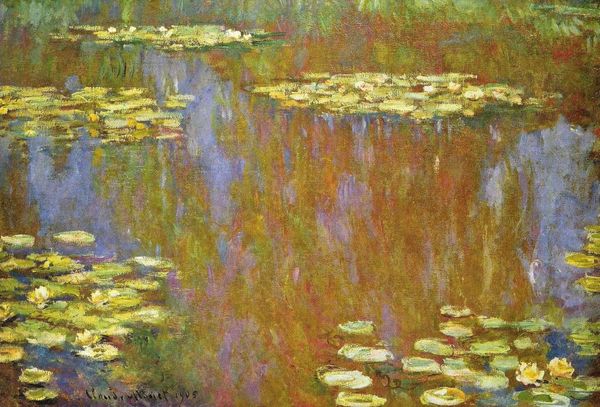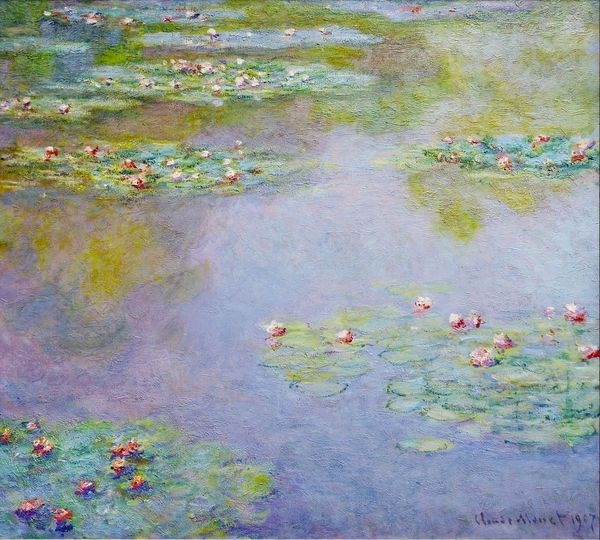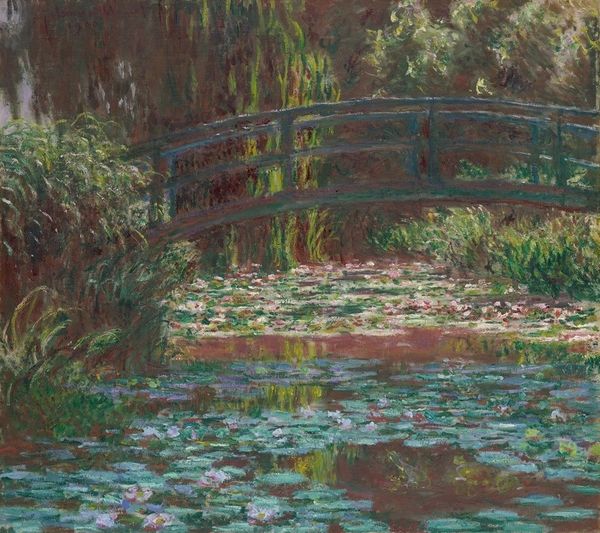
Copyright: Public Domain: Artvee
Curator: This is Claude Monet's "Le Bassin des Nymphéas," painted in 1904 using oil paint. There’s something so peaceful and serene about it; it's almost meditative in its depiction of water lilies. How do you approach a piece like this? Editor: It is true, there is an etherealness and I am very curious. What specifically do you see when you examine this artwork? Curator: I'm immediately drawn to the material reality of the work. Monet's process is crucial. Think about painting *en plein air*— directly engaging with the environment and its ephemeral changes. Consider how he grinds his pigments, mixes his paints, the very act of applying oil to canvas outside! These materials and labor, the weather he dealt with, all contributed. This wasn't just capturing light; it was physical engagement. Editor: That’s an interesting perspective. So, you're suggesting that the experience of the painter making the work is paramount. Curator: Absolutely! The work embodies not just an image, but the physical act of its creation and all its associated processes. Consider the commerce, the dealers that would enable that access, or not. It speaks volumes about his privileged position and access to materials. Think about the working classes who might see water lilies yet lack that creative freedom or resources to create art about them! Editor: It really alters my understanding. To think of it beyond simply 'Impressionism' but really diving into what conditions allowed its creation! Curator: Precisely. The materials, the societal structures, the accessibility, and the means of production— they’re inseparable from our understanding. Editor: This lens changes the way I look at every piece now! Thank you.
Comments
No comments
Be the first to comment and join the conversation on the ultimate creative platform.
